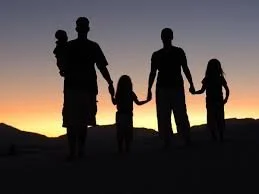Adopting a Law
Here we finally turn to the aspect of this debate that I assume is best known by people in this room: the controversy over the abuse of Russian adopted children at the hands of their new parents, leading (indirectly) to the adoption of the Dima Yakovlev law (irony of ironies, Dima Yakovlev couldn't get adopted in Russia, but his law could). And here all the aforementioned discourses of Russian orphans are marshaled, pell-mell, in defense of an adoption ban, along with one of the main arguments normally used against it: the suffering of individual children. In the years leading up to the ban on adoption of Russian children by American citizens, the Russian media had provided extensive coverage of cases involving dead adopted Russian children, often under circumstances that could, at least at first, reasonably be called suspicious. As early as 1996 (in the run-up to the first legislative proposals for an adoption ban), 2 1/2-year-old David Polreis (born Konstantin Shelpin) was found dead, with bruises and other signs of physical abuse all over his body.
The parents claimed that the child suffered from “Reactive Attachment Disorder,” a controversial diagnosis that has become quite common among formerly institutionalized children. The parents, with the support of therapists practicing the Evergreen treatment protocols (themselves a controversial repurposing of the discredited “holding therapy” once practiced unsuccessfully on autistic children), claimed that the child had beaten himself to death. The sentencing of the mother to eighteen years in prison did little to calm passions in the Russian media. The case brought Reactive Attachment Disorder into the Russian anti-adoption lexicon, providing an easy (and I would argue, legitimate) target for critique. Moreover, the Evangelical parents, thanks to their own words, come off as religious fanatics (or, in Russian terms, sectarians): before the adoption, Rene Polreis was deeply concerned about ending up with a “child conceived by atheists.”
The 2008 death of adoptee Chase Harrison, whom his new father forgot and left in a hot car for hours, was, if anything, even more scandalous. Here we have the perfect storm of Americanism: car culture, parking lots, workaholic, unfeeling parents, and, worst of all, a judicial system that refused to imprison the culprit. Immediately the media and blogsphere were filed with claims that little Chase was the victim of anti-Russian bias and concerted neglect on the part of the American government. It’s worth noting how infrequently Russian press reports mentioned the Commonwealth of Virginia, the state in which the Harrisons lived, which only exacerbated an understandable lack of popular comprehension about the difference between federal and state jurisdictions (and, perhaps, also reflected common assumptions that the judiciary is at the beck and call of the executive).
In talking about Chase Harrison, I have omitted one salient detail: in Russia, his birth name was Dima Yakovlev. Withholding his name was appropriate, if only to attempt to replicate the strange temporal gap between the boy’s terrible death and the drafting of the law that now bears his name. Dima died on July 8, 2008; his adopted father was found not guilty on December 17th of that same year. The adoption ban bearing Dima Yakovlev’s name was signed into law on December 28, 2012. By this point, transnational adoption as a political issue seems to have drifted away completely from the fate of actual or potential adoptees.
“Adoption” stock photo also looks like ad for doomsday cult
There are enough facts and factoids on each side of the issue to make a convincing case. On the pro-adoption side, we have the deplorable conditions of most Russian orphanages, the paucity of Russian citizens willing to adopt, the near-impossibility of finding Russian parents to take in children with special needs, and the statistical comparison between the number of Russian adoptees who have died suspiciously in the United States and the number of unwanted children who die in Russian orphanages. On the anti-adoption side, the cases of abuse and neglect would speak for themselves, and recent exposes in the American press have suggested that the American adoption and child-protection system is far too porous a safety net. If the lack of understanding of the relationship between the American federal and state authorities leads many in Russia to erroneous conclusions about plots and conspiracies, this same complex interplay between the federal government and the states also facilitates a horrific network of informal “rehoming,” in which difficult adopted children (from a variety of countries, including both the US and the Russian Federation) are passed from one set of adoptive parents to another, without the knowledge, let alone the approval, of child welfare authorities. In addition, increasing scrutiny of the evangelical “Quiverfull" movement towards maximal adoption (sometimes leading to families in the double digits) casts doubts on the preparation and fitness of these parents to cope with the problems they will inevitably encounter. (Here I recommend Kathryn Joyce's The Child Catchers).
There’s just one more question, though: why was this happening now?
Next: Stranger Danger
